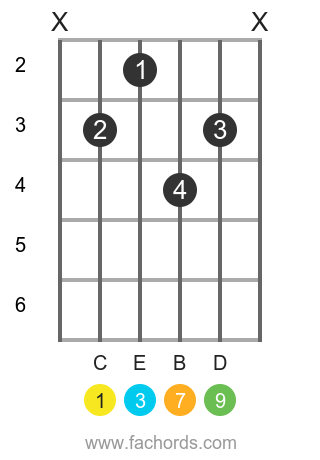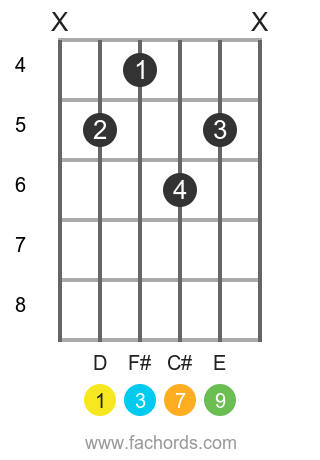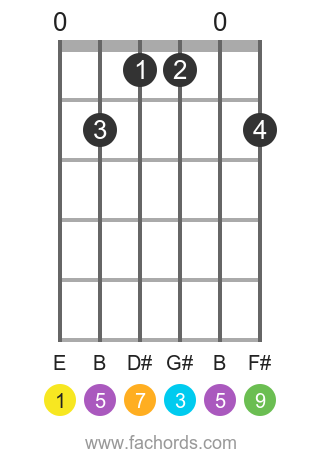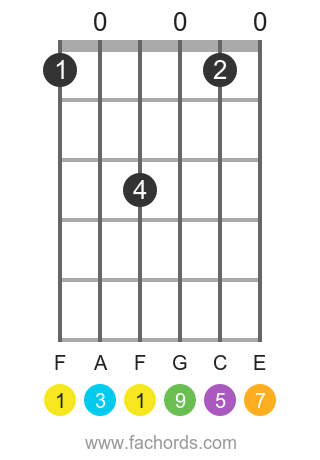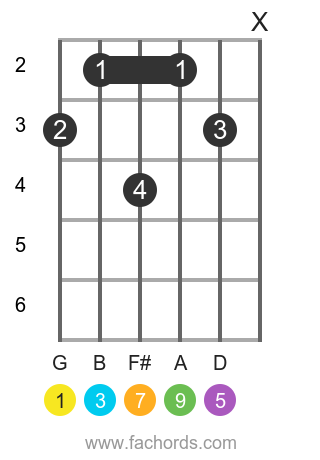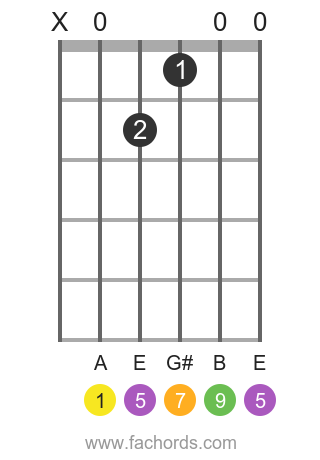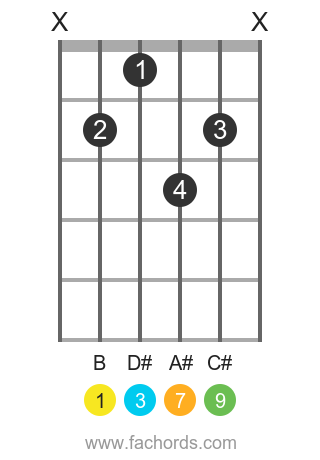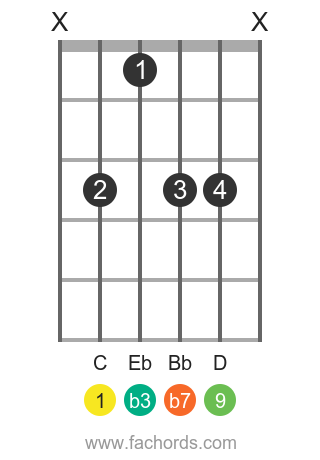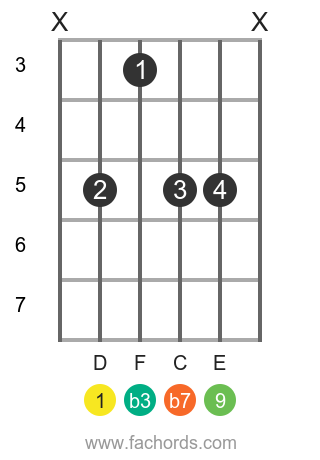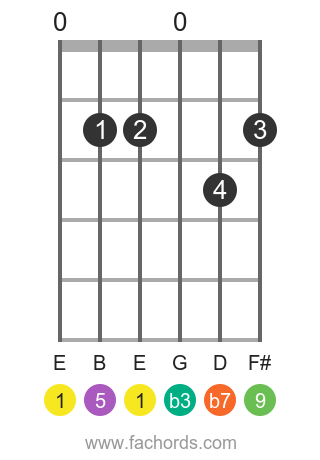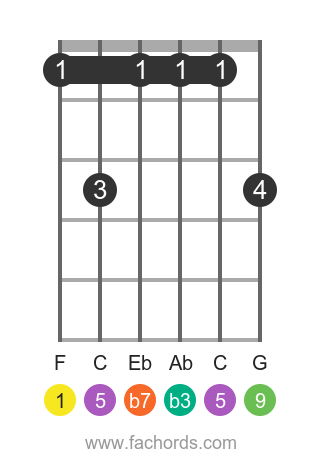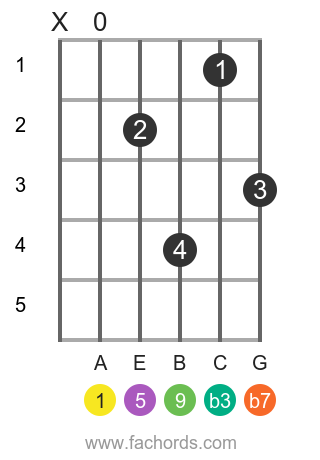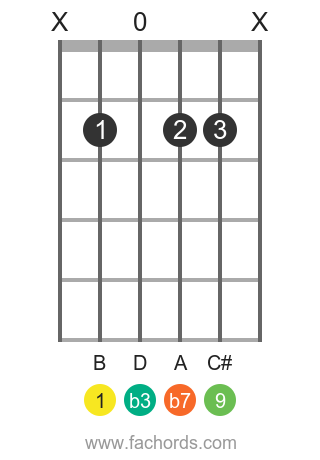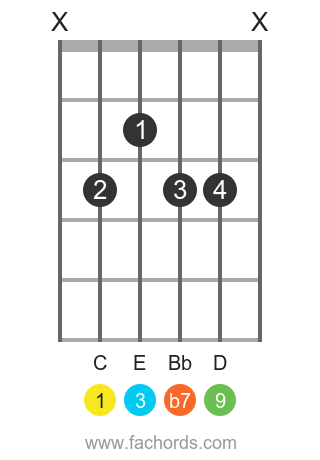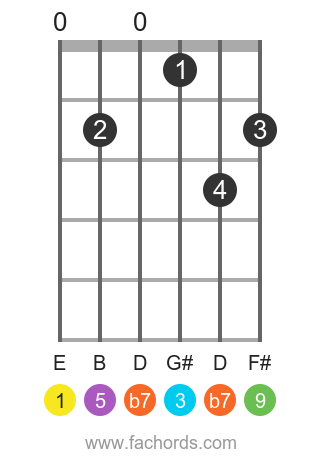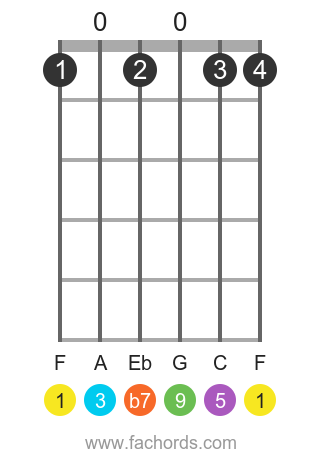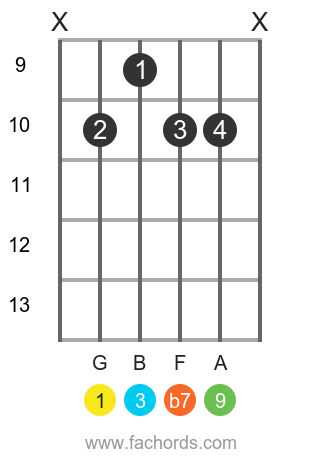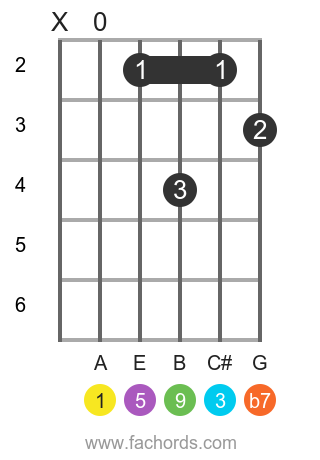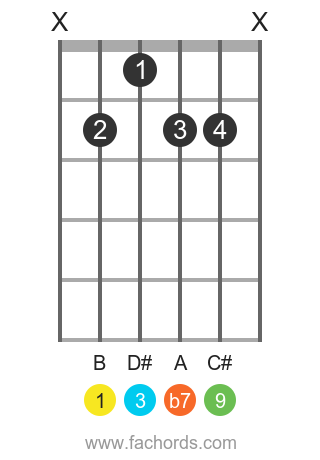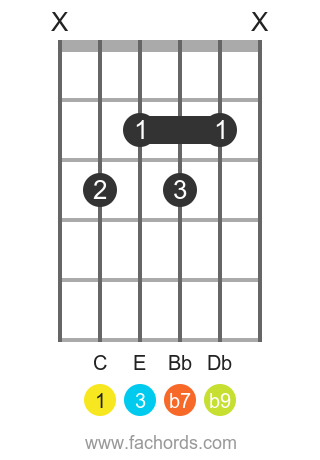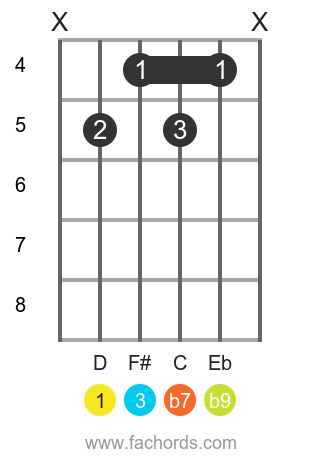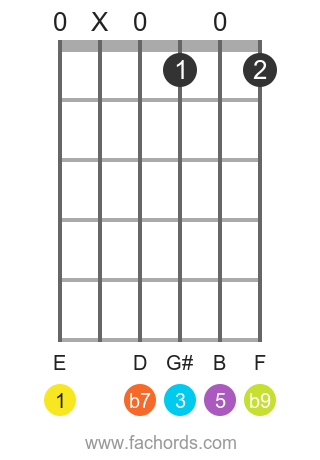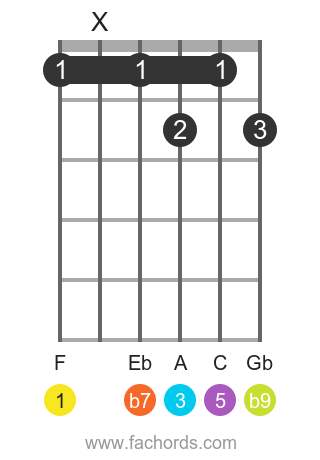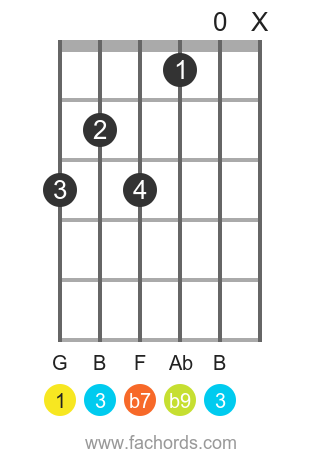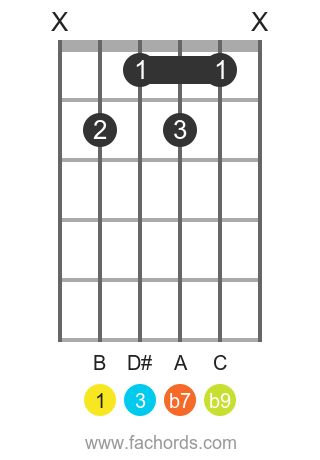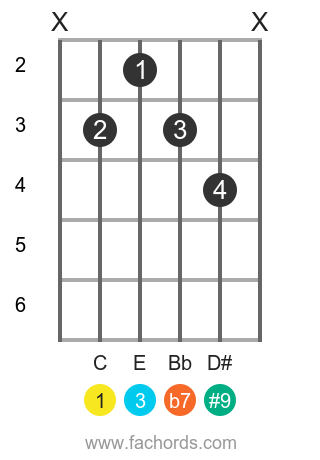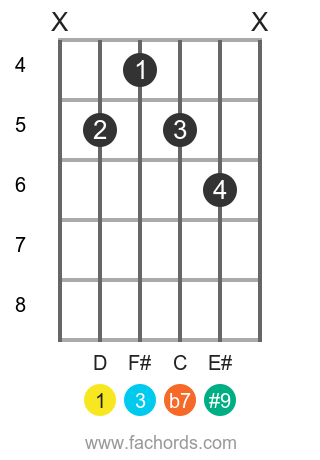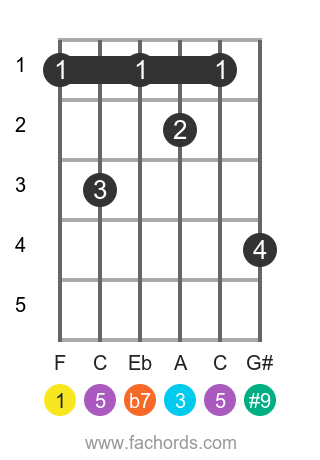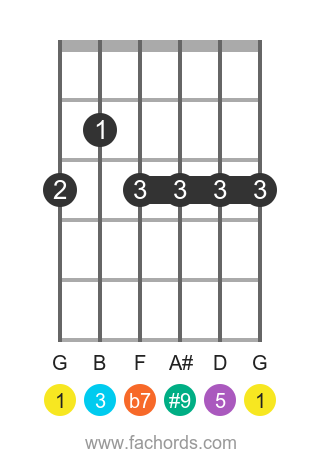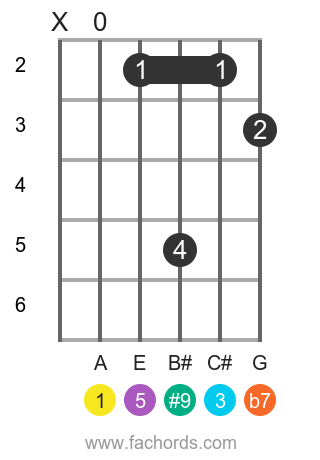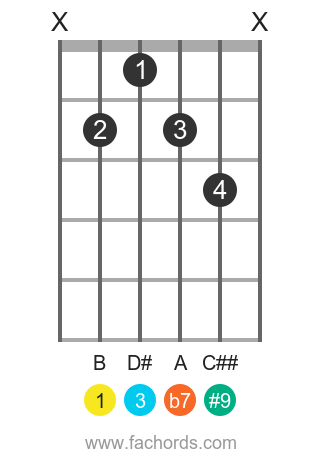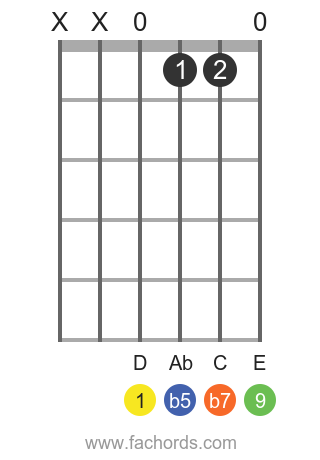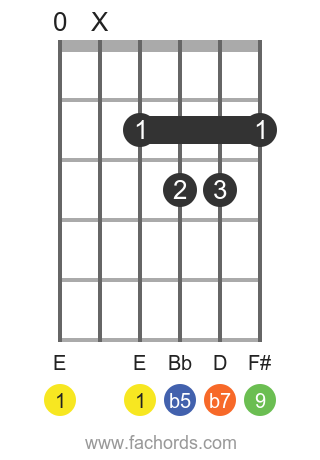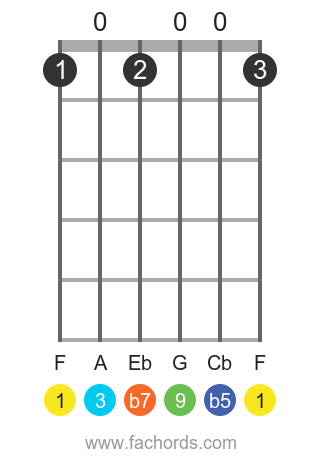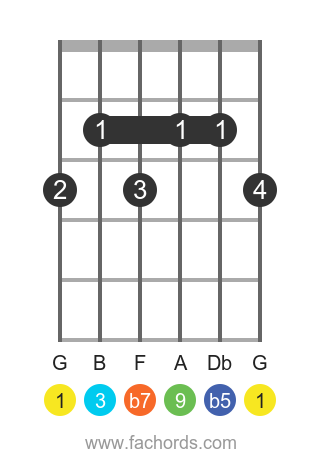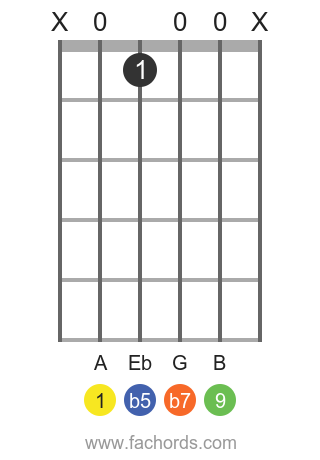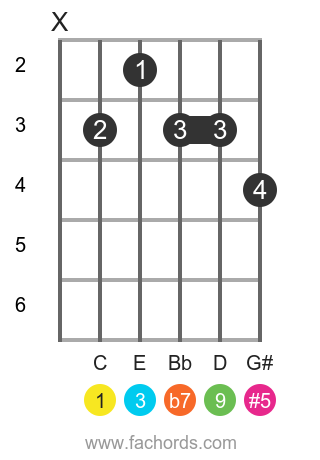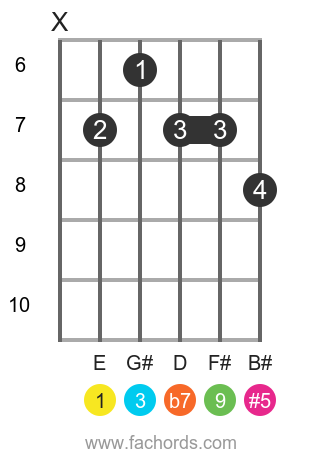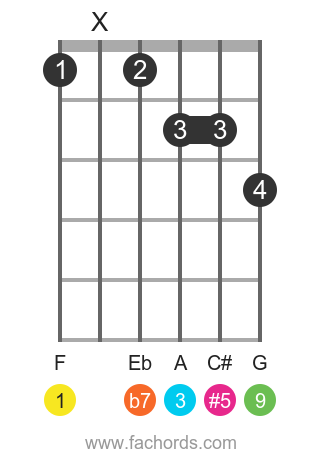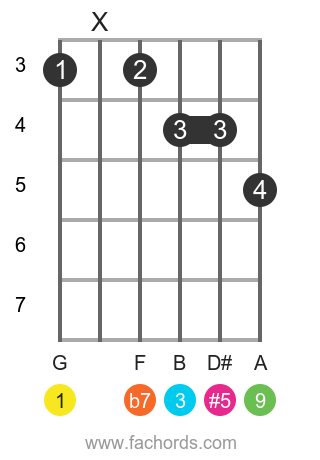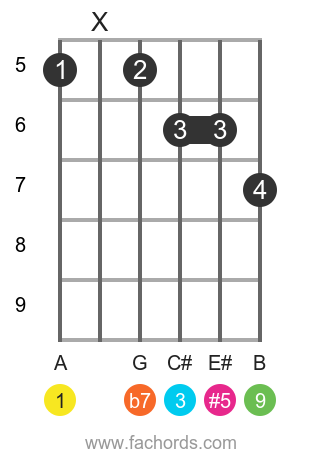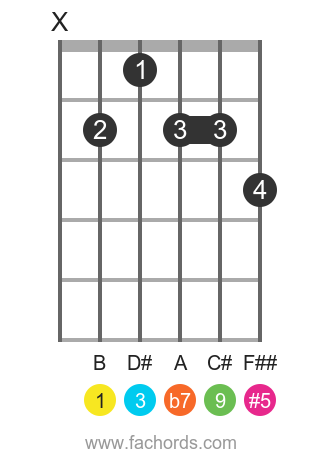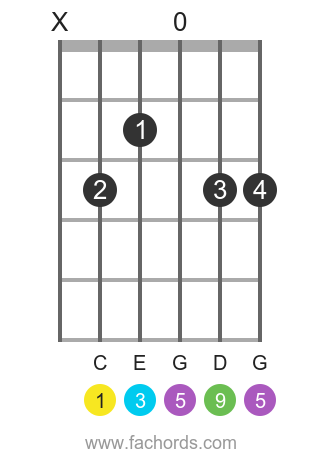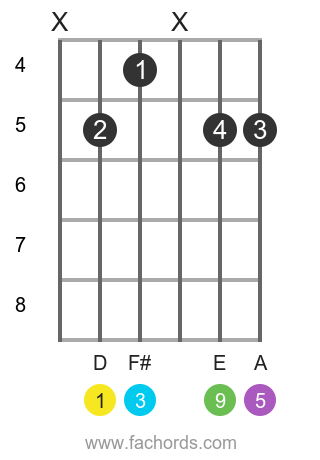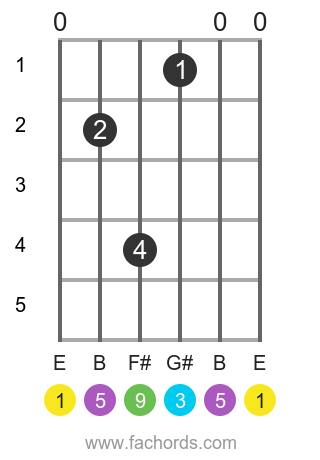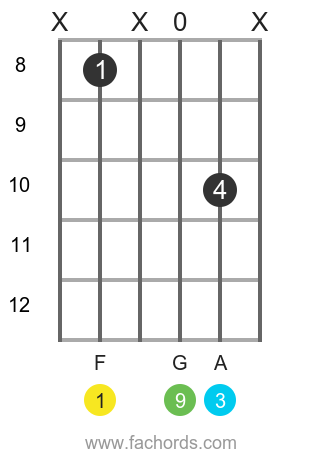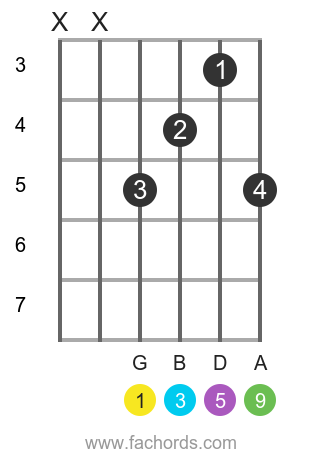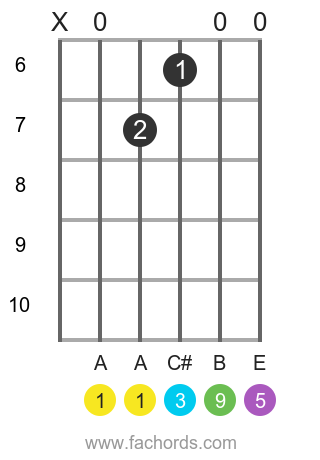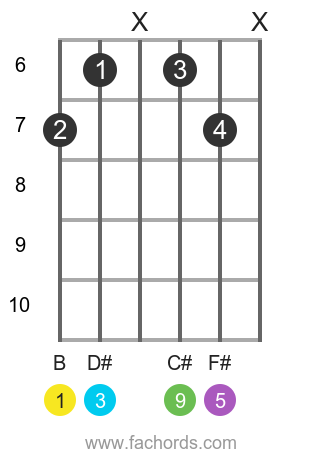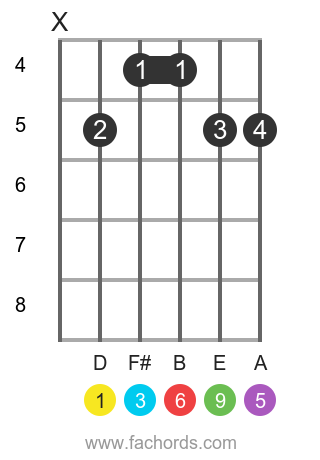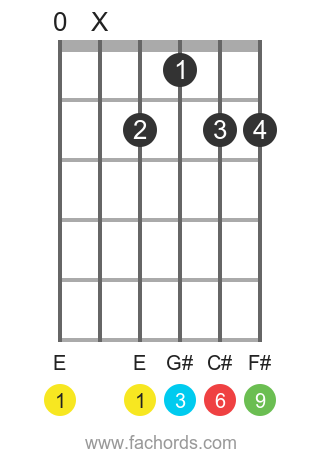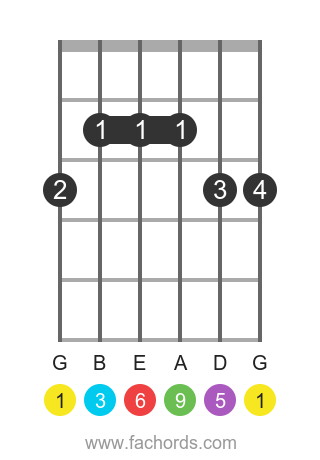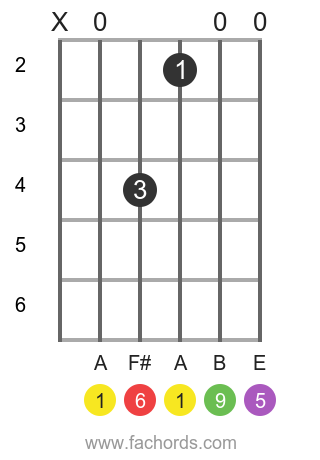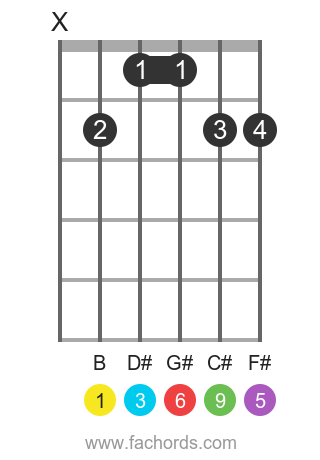Ninth Chords on Guitar | Guitar Chords Chart
How To Create and Play 9th Chords all Along the Fretboard
In this tutorial, we're going to learn how to create and play 9th chords , a family of chords that can introduce interesting variations and feelings in your music.
Before diving into 9th chords, you should be familiar with your major and minor triads and many of the chords we build on them.
Depending on which notes in the chords we raise or lower we find new chords like augmented or diminished and beyond that, we can start adding more notes of the scale.
Learning 7th chords got a little tricky as we had more combinations, but as long we stuck to the formulas it wasn't too hard.
In this article you will see that adding the 9th scale degree note to our chord is the same process (all the diagrams in this tutorial are taken from Chords Domination ebook, check it out!).
How to Build a 9th Chord
You have likely also read about sus2 chords (using the second note of the scale in place of the third), in that case the 9th chord will sound familiar.
With the C scale of C D E F G A B the sus2 chord is made up of C-D-G . That D note is also the 9th note of the scale once we repeat it.
However a sus2 chord will not be the same so it is important to make the distinction.
Like 7th chords the 9th is built on the previous chords we have learned.
Despite the D being the same note the 9th interval sounds more dissonant than the second. Jumping an octave up to the next D has that effect.
And just like the second interval the ninth can be a major or minor, we get different types of 9th chords depending on which notes are raised or lowered.
Common 9th Chords | Guitar Chord Charts
Major 9th Guitar Chord Chart
The Major 9th is built on a major 7th chord and simply adding the 9th note. The formula for a major 7th is the root (1), third, fifth, and seventh so Cmaj7 is C E G B. Add the D and you have a Cmaj9.
Minor 9th Guitar Chord Chart
Despite this being called a minor 9th we do not flatten that 9th note. It is called that because it is built on top of minor 7th.
With the formula for that being 1, b3, 5, b7 so a Cm9 will be C, Eb, G, Bb, D. Don't confuse your major and minor 9th chords with the dominant!
Dominant 9th Guitar Chord Chart
This is the most common 9th we usually see, as it is built on the often used dominant 7th with the formula 1, 3, 5, b7 .
The chord C9 would be C, E, G, Bb, D and it is just notated with the number after it like the dominant seventh. Many of our examples below will involve this popular form of the 9th chord.
Dominant Minor 9th (7b9)
Now we are finally going to flatten that 9th note which is another name for the dominant minor 9th.
This flat 9th is once again built on the dominant 7th in this case we just add the b9. A C7b9 would have the notes C, E, G, Bb, Db.
This chord is used when you want even more dissonance than the dominant 9th!
Dominant 7#9 Guitar Chord Chart
This one is also known as the Jimi Hendrix chord as he was a big fan of it. In this case we take that dominant 7th and of course add a raised 9th.
A C7#9 would be made up of C, E, G, Bb, D#.
Dominant 9b5 Guitar Chord Chart
And of course we can take our dominant 9th and raise or lower the 5th note. For this we have the formula with the diminished fifth 1, 3, b5, b7, 9 or C, E, Gb, Bb, D for C9b5.
Dominant 9#5 Guitar Chord Chart
If use an augmented 5th we get another altered 9th with C, E, G#, Bb, D for C9#5.
Add9 Guitar Chord Chart
So far we have been building 9th chords off of 7th formulas, but we can also add the 9th note in without the 7th.
In this case add9 literally just means to add the note to whatever chord comes before it. A Cadd9 will be 1, 3, 5, 9 or C, E, G, D. If it is Cmadd9 then we have C, Eb, G, D.
6/9 Guitar Chord Chart
And instead of the 7th we could use the 6th scale degree to make a chord 1, 3, 5, 6, 9 or C E G A D a C6/9.
(Just don't confuse this with a slash chord which tells us the root or bass note of the chord).
This chord actually doesn't have the dissonance that other 9ths have and can be used as a substitute for the tonic chord.
Popular Examples and When to Use 9th Chords
Jazz alone is filled with all these examples of 9th chords and are where the other genres pulled their uses from.
However it is also common in jazz to leave certain voicings up to the player so in that genre things have more leeway to change.
It is a little easier to see examples in pop tunes as they are meant to be played in one specific way.
Of course the dominant examples involve the fifth so we can expect a chord like G9 to be used in similar circumstances as the dominant 7th.
Dominant 9th Example Songs
A dominant 9th can be found in boogie woogie, rock , and is heavily used in funk with songs like " Play That Funky Music " and " I Feel Good ".
Play just the four inner closed notes of this E9 with the right staccato strum pattern and you have your first lesson in funk music .
7#9 Chord Example Songs
Pink Floyd's "Breathe" has quite a mix of 9th chords including dominant sharp and flat 9th, plus each line in the verse starts with a minor 9th.
And of course we have more 7#9 chords in Hendrix classics like the chorus of " Purple Haze ".
Right before Prince sings the word " Kiss " in his song he strums the E9sus4 chord (a suspendend chord , that is made by replacing the 3rd with the 4th note).
7b9 Chord Example Songs
And even the Beatles use the E7b9 in pop with " I Want You (She's So Heavy) ".
Minor 9th Example Songs
We see more minor 9th chords in Al Green's " Let's Stay Together ". Dominant, major, and minor 9ths are more common than dominant 9b5 or 9#5.
Augmented and diminished 9th Example Songs
You will often see these augmented and diminished 9th chords in jazz standards like Hoagy Carmichael's " Skylark " and " Georgia On My Mind ".
As far as pop goes the Who song " Little Billy " has a 9#5 chord (and an add9 also!). And we even sometimes see flattened 9th chords like F#7#5b9 in the song " Town Without Pity ".
Add 9th Chord Example Songs
As far as major and minor add9 chords Sting uses both in the song " Every Breath You Take " and the 70s " Love Rollercoaster " uses just the add9.
6/9 Chords Example Songs
Remember that the 6/9 can be used in place of the tonic and The Beatles use a G6/9 as the ending chord to " Devil in Her Heart ".
It is common in jazz tunes and those inspired by them to use that subtle sounding of the sixth chord .
Ninth Chords on Guitar | Conclusions
You will basically be using 9th chords in a similar manner as 7th chords to create dissonance that usually needs resolved.
Or in cases of funk when you need a brief but distinct guitar riff to really stand out on the offbeat.
As usual the best way to learn where to use them is to play as many songs as possible that have them in it.
And as you start to work on your own material, add them in when they sound good!
As you get more comfortable playing these chords they will become as easy to grasp as all your other chords so far.
Download our free chords ebook with tons of 9th chord diagrams and other qualities.
